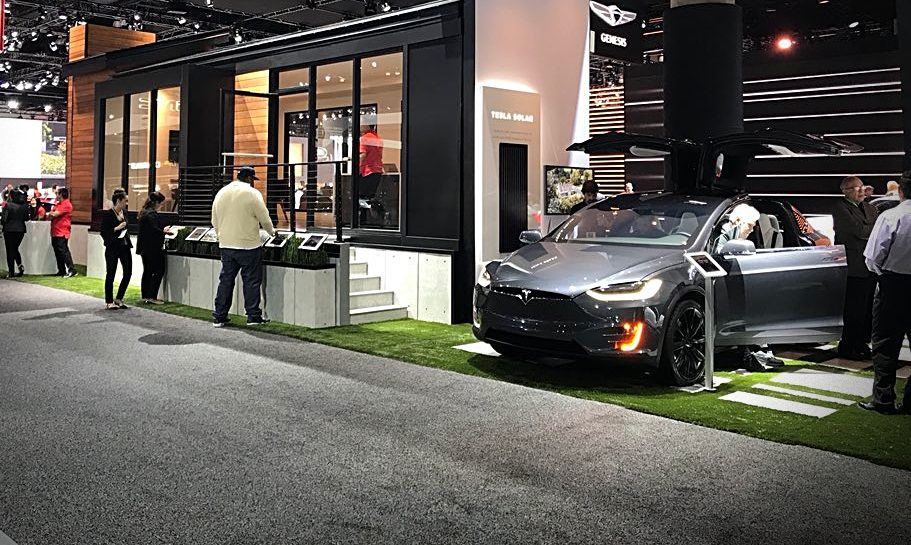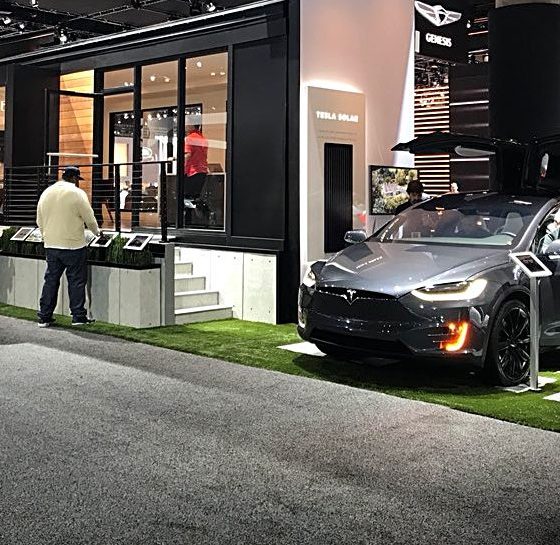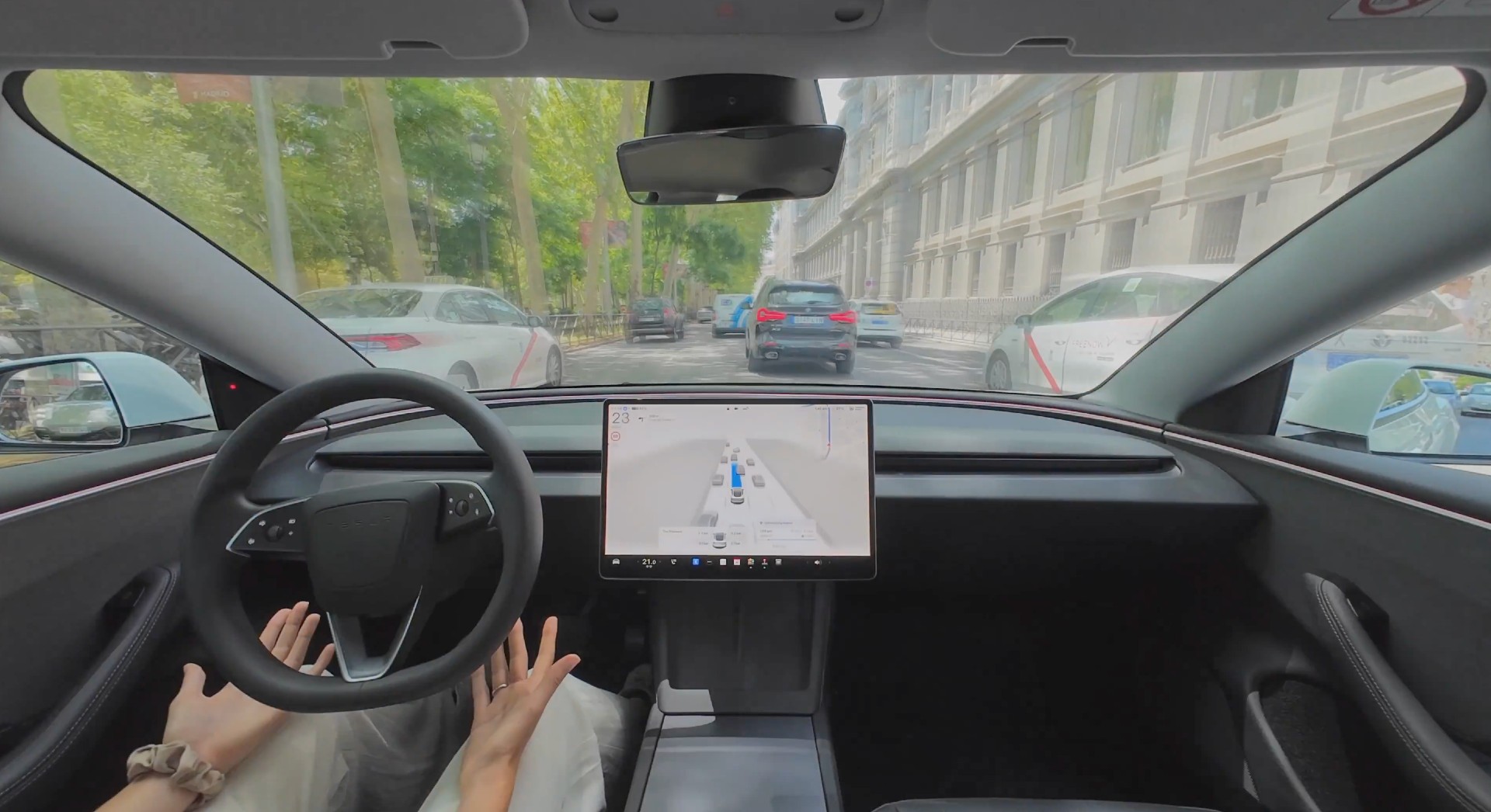

Investor's Corner
Tesla “ecosystem” of product and services are redefining the auto business
Tesla’s original mission was to electrify the world’s transportation system. Along the way, that expanded into a reboot of the entire automotive industry. By the time it’s all over, Tesla will have redefined not just the way cars are fueled, but the way they are designed, manufactured, marketed and sold.
From the company’s emphasis on self-driving capabilities to its treatment of the vehicle as a computer system, with a unified operating system and over-the-air software updates, Tesla has made important advances, and the lessons have not been entirely lost on the legacy automakers. There are already signs that the Tesla way of doing things is starting to influence the global giants in several areas.
Like other tech pioneers such as Apple, Tesla sees the automobile as part of an “ecosystem” of products and services, and forward-looking execs at other automakers are beginning to see things this way too. The electric vehicle will not be simply a plug-in replacement for the legacy gas-burner, but rather a part of a new paradigm that includes charging infrastructure, vehicle autonomy, new ownership models and renewable energy. Automakers around the world are investing in charging networks, makers of self-driving tech and transportation service providers like Uber and Lyft. Some have explored partnering with solar installers to offer package deals to customers.
Also like Apple, Tesla understands that it isn’t selling just a product, but rather an “ownership experience.” When you look at automobile ownership as an overall experience, you’re bound to come to the conclusion that there are certain parts of the experience that people really dislike, and smarmy car salesmen are near the top of the list. Another obvious conclusion is that the car buying experience is hopelessly outdated.
We’ve been banking online for decades and buying consumer goods without setting foot in a store. Even the process of buying and selling real estate has moved online to a great extent. When it comes to buying a car, however, we still have to drive all the way out to the airport road and endure a long and tedious sales ritual that hasn’t changed much since the 1960s.
Tesla’s efforts to make car-buying more pleasant date all the way back to the Roadster days, as former Tesla VP George Blankenship explained in depth in a recent talk. The company’s direct-to-consumer sales model is loved by auto buyers, hated by politically powerful auto dealers, and surely envied by the legacy automakers who, for better or for worse, are firmly bonded both legally and financially to their existing system of independent dealerships.
The Tesla sales model saves money by cutting out the middleman, it gives the company near-total control over the way its vehicles are presented to buyers, and it gives buyers a direct relationship with the automaker. As a recent article in Fortune points out, it also delivers another unprecedented benefit: it brings buyers (and their money) into the car-buying process before the company builds a single vehicle.
“They managed to sell so many Model 3s, even before the Model 3 was in its final design stages,” says Tim Huntzinger, an automotive designer who teaches at the ArtCenter College of Design in California. “It was almost like they were doing Kickstarter for cars. They were able to bring in hundreds of millions in revenue before actually creating final tooling for the vehicle.”
“That’s huge for the automotive industry,” said Huntzinger. “For the entire history of the automotive industry, you had to spend millions or hundreds of millions to even turn a cent. Many companies have gone out of business that way.”
And the benefits of this system don’t just flow one way – Huntzinger believes that buyers are empowered by being involved in the process earlier. “To get feedback from customers early in the process – that’s totally new and totally different. The purchasing experience is so different [from what] we’ve all been forced into with the dealership model. It’s super-refreshing to see the customer being put first.”
===
Note: Article originally published on evannex.com, by Charles Morris

Investor's Corner
Tesla price target boost from its biggest bear is 95% below its current level

Tesla stock (NASDAQ: TSLA) just got a price target boost from its biggest bear, Gordon Johnson of GLJ Research, who raised his expected trading level to one that is 95 percent lower than its current trading level.
Johnson pushed his Tesla price target from $19.05 to $25.28 on Wednesday, while maintaining the ‘Sell’ rating that has been present on the stock for a long time. GLJ has largely been recognized as the biggest skeptic of Elon Musk’s company, being particularly critical of the automotive side of things.
Tesla has routinely been called out by Johnson for negative delivery growth, what he calls “weakening demand,” and price cuts that have occurred in past years, all pointing to them as desperate measures to sell its cars.
Johnson has also said that Tesla is extremely overvalued and is too reliant on regulatory credits for profitability. Other analysts on the bullish side recognize Tesla as a company that is bigger than just its automotive side.
Many believe it is a leader in autonomous driving, like Dan Ives of Wedbush, who believes Tesla will have a widely successful 2026, especially if it can come through on its targets and schedules for Robotaxi and Cybercab.
Justifying the price target this week, Johnson said that the revised valuation is based on “reality rather than narrative.” Tesla has been noted by other analysts and financial experts as a stock that trades on narrative, something Johnson obviously disagrees with.
Dan Nathan, a notorious skeptic of the stock, turned bullish late last year, recognizing the company’s shares trade on “technicals and sentiment.” He said, “From a trading perspective, it looks very interesting.”
Tesla bear turns bullish for two reasons as stock continues boost
Johnson has remained very consistent with this sentiment regarding Tesla and his beliefs regarding its true valuation, and has never shied away from putting his true thoughts out there.
Tesla shares closed at $431.40 today, about 95 percent above where Johnson’s new price target lies.
Investor's Corner
Tesla gets price target bump, citing growing lead in self-driving

Tesla (NASDAQ: TSLA) stock received a price target update from Pierre Ferragu of Wall Street firm New Street Research, citing the company’s growing lead in self-driving and autonomy.
On Tuesday, Ferragu bumped his price target from $520 to $600, stating that the consensus from the Consumer Electronics Show in Las Vegas was that Tesla’s lead in autonomy has been sustained, is growing, and sits at a multiple-year lead over its competitors.
CES 2026 validates Tesla’s FSD strategy, but there’s a big lag for rivals: analyst
“The signal from Vegas is loud and clear,” the analyst writes. “The industry isn’t catching up to Tesla; it is actively validating Tesla’s strategy…just with a 12-year lag.”
The note shows that the company’s prowess in vehicle autonomy is being solidified by lagging competitors that claim to have the best method. The only problem is that Tesla’s Vision-based approach, which it adopted back in 2022 with the Model 3 and Model Y initially, has been proven to be more effective than competitors’ approach, which utilizes other technology, such as LiDAR and sensors.
Currently, Tesla shares are sitting at around $433, as the company’s stock price closed at $432.96 on Tuesday afternoon.
Ferragu’s consensus on Tesla shares echoes that of other Wall Street analysts who are bullish on the company’s stock and position within the AI, autonomy, and robotics sector.
Dan Ives of Wedbush wrote in a note in mid-December that he anticipates Tesla having a massive 2026, and could reach a $3 trillion valuation this year, especially with the “AI chapter” taking hold of the narrative at the company.
Ives also said that the big step in the right direction for Tesla will be initiating production of the Cybercab, as well as expanding on the Robotaxi program through the next 12 months:
“…as full-scale volume production begins with the autonomous and robotics roadmap…The company has started to test the all-important Cybercab in Austin over the past few weeks, which is an incremental step towards launching in 2026 with important volume production of Cybercabs starting in April/May, which remains the golden goose in unlocking TSLA’s AI valuation.”
Tesla analyst breaks down delivery report: ‘A step in the right direction’
Tesla has transitioned from an automaker to a full-fledged AI company, and its Robotaxi and Cybercab programs, fueled by the Full Self-Driving suite, are leading the charge moving forward. In 2026, there are major goals the company has outlined. The first is removing Safety Drivers from vehicles in Austin, Texas, one of the areas where it operates a ride-hailing service within the U.S.
Ultimately, Tesla will aim to launch a Level 5 autonomy suite to the public in the coming years.
Investor's Corner
Tesla Q4 delivery numbers are better than they initially look: analyst
The Deepwater Asset Management Managing Partner shared his thoughts in a post on his website.

Longtime Tesla analyst and Deepwater Asset Management Managing Partner Gene Munster has shared his insights on Tesla’s Q4 2025 deliveries. As per the analyst, Tesla’s numbers are actually better than they first appear.
Munster shared his thoughts in a post on his website.
Normalized December Deliveries
Munster noted that Tesla delivered 418k vehicles in the fourth quarter of 2025, slightly below Street expectations of 420k but above the whisper number of 415k. Tesla’s reported 16% year-over-year decline, compared to +7% in September, is largely distorted by the timing of the tax credit expiration, which pulled forward demand.
“Taking a step back, we believe September deliveries pulled forward approximately 55k units that would have otherwise occurred in December or March. For simplicity, we assume the entire pull-forward impacted the December quarter. Under this assumption, September growth would have been down ~5% absent the 55k pull-forward, a Deepwater estimate tied to the credit’s expiration.
“For December deliveries to have declined ~5% year over year would imply total deliveries of roughly 470k. Subtracting the 55k units pulled into September results in an implied December delivery figure of approximately 415k. The reported 418k suggests that, when normalizing for the tax credit timing, quarter-over-quarter growth has been consistently down ~5%. Importantly, this ~5% decline represents an improvement from the ~13% declines seen in both the March and June 2025 quarters.“
Tesla’s United States market share
Munster also estimated that Q4 as a whole might very well show a notable improvement in Tesla’s market share in the United States.
“Over the past couple of years, based on data from Cox Automotive, Tesla has been losing U.S. EV market share, declining to just under 50%. Based on data for October and November, Cox estimates that total U.S. EV sales were down approximately 35%, compared to Tesla’s just reported down 16% for the full quarter. For the first two months of the quarter, Cox reported Tesla market share of roughly a 65% share, up from under 50% in the September quarter.
“While this data excludes December, the quarter as a whole is likely to show a material improvement in Tesla’s U.S. EV market share.“








